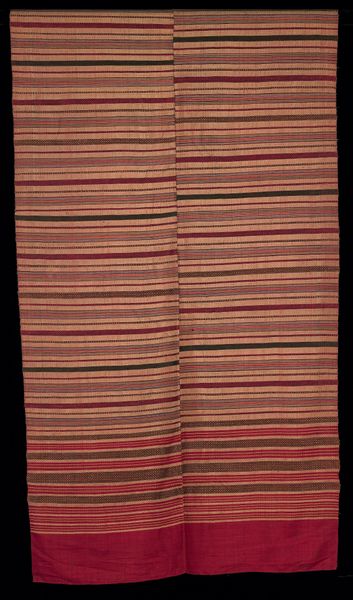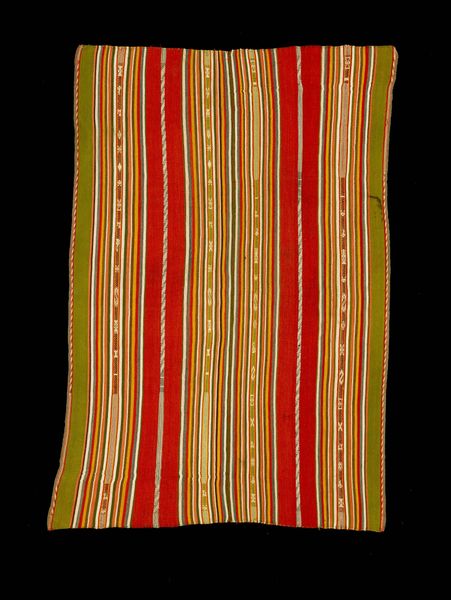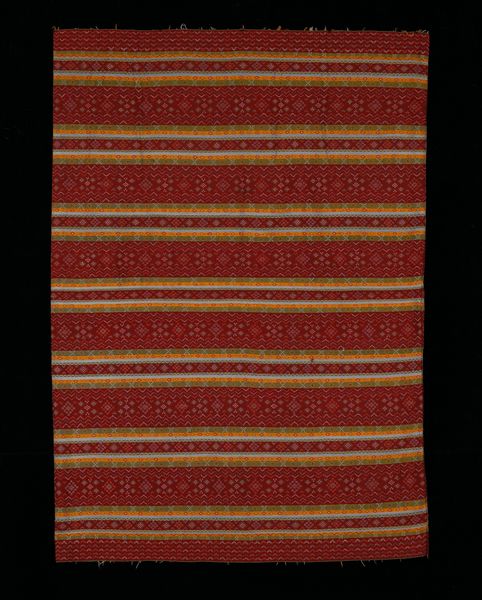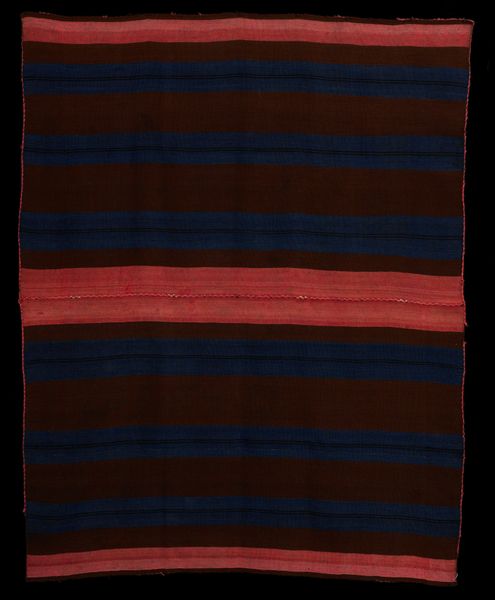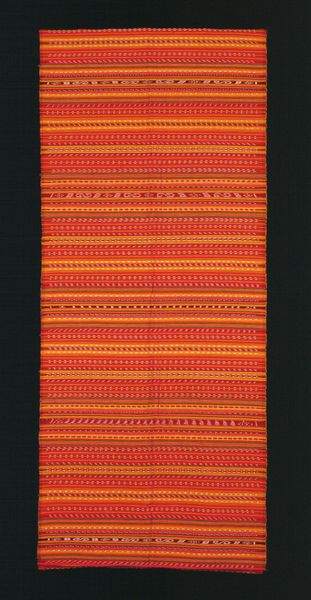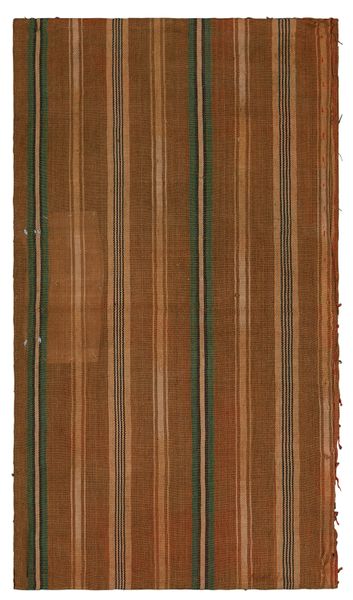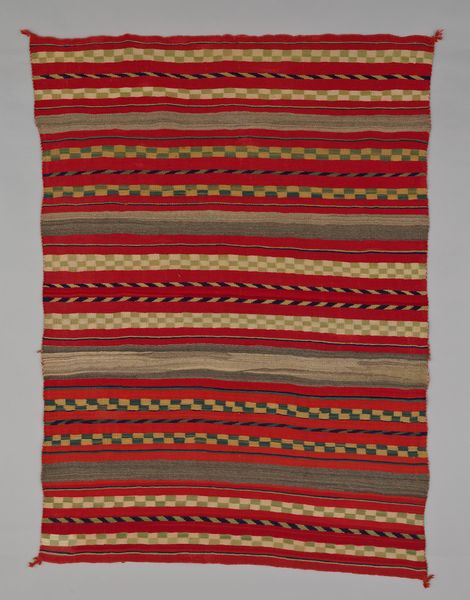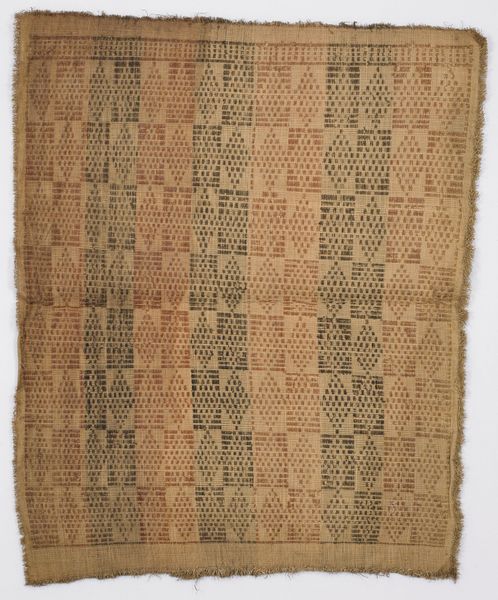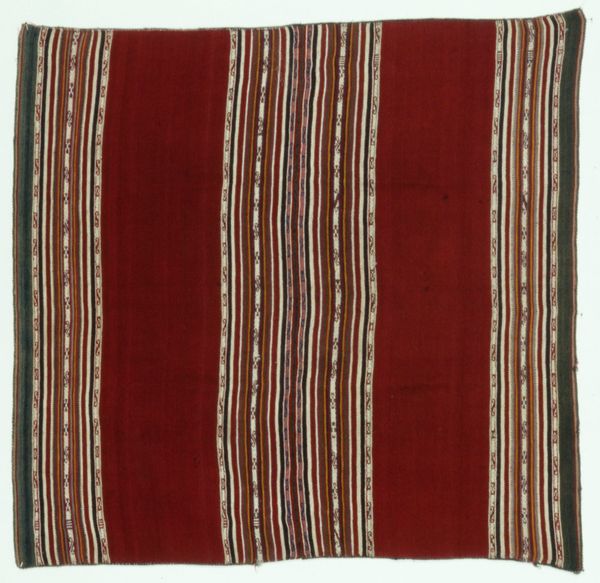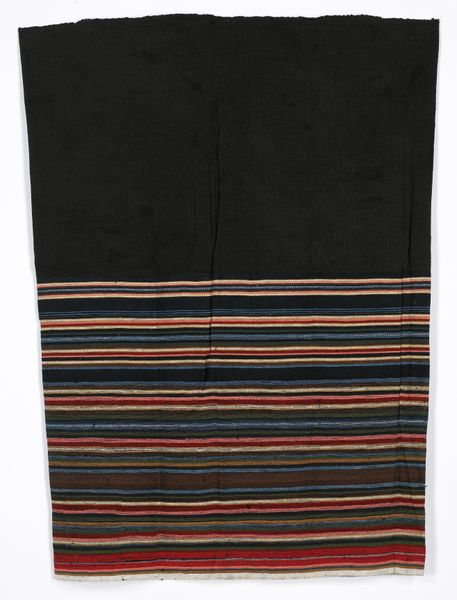
fibre-art, textile
#
fibre-art
#
textile
#
geometric pattern
#
abstract pattern
#
geometric
#
abstraction
Dimensions: 6 3/8 × 46 5/8 in. (16.19 × 118.43 cm) (overall)
Copyright: Public Domain
Curator: We are looking at "Orange fragment with polychrome stripes" held at the Minneapolis Institute of Art. This textile fragment, dating to around the 19th century, presents a study in simplicity. Editor: My immediate reaction is one of warmth, but also slight weariness. The dominant orange is comforting, suggestive of earth tones, but the uniformity of the stripes feels a bit monotonous without knowing its original usage. Curator: Precisely. Let’s think about that—textiles like this aren’t just material objects; they were crafted to perform a certain role, maybe for ritual use, domestic decoration or simply a trade commodity. Stripes in many cultures signify boundaries, pathways or connections, so the function really alters the read here. Editor: True. The regularity speaks to a mechanization of production happening at this time – likely woven on some form of a loom. The labor involved is what captures my attention and suggests potential standardization of weaving. Curator: It’s fascinating how a seemingly simple design, even now, creates the feeling of grounding through the warm earth tone and consistent vertical lines. Does it make you think of something? Editor: Interestingly, I am seeing something of a musical score – the textile is quite similar to a very rudimentary type of a hymn where certain colors stand for tempo, pause or stress, something akin to pre-printing notation! It could hint towards a sense of regulated living, social stability achieved through repeatable efforts. Curator: That reading, the sense of social harmony encoded within material production is really astute. Thank you for expanding our viewing so thoroughly. Editor: Well, considering the level of craft versus the aesthetic sparseness opens this little fragment to many types of interpretive possibilities.
Comments
No comments
Be the first to comment and join the conversation on the ultimate creative platform.
